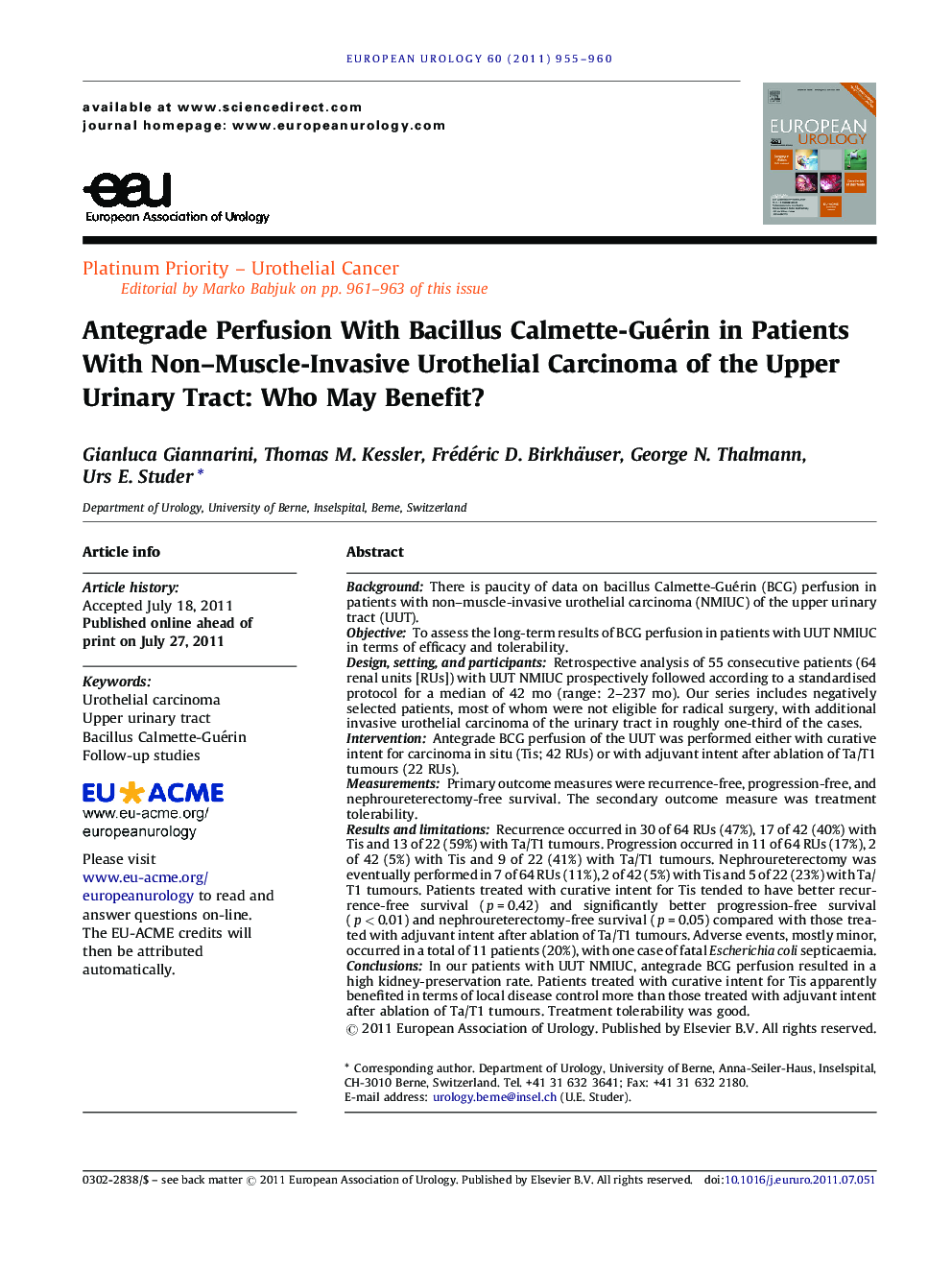| Article ID | Journal | Published Year | Pages | File Type |
|---|---|---|---|---|
| 3927091 | European Urology | 2011 | 6 Pages |
BackgroundThere is paucity of data on bacillus Calmette-Guérin (BCG) perfusion in patients with non–muscle-invasive urothelial carcinoma (NMIUC) of the upper urinary tract (UUT).ObjectiveTo assess the long-term results of BCG perfusion in patients with UUT NMIUC in terms of efficacy and tolerability.Design, setting, and participantsRetrospective analysis of 55 consecutive patients (64 renal units [RUs]) with UUT NMIUC prospectively followed according to a standardised protocol for a median of 42 mo (range: 2–237 mo). Our series includes negatively selected patients, most of whom were not eligible for radical surgery, with additional invasive urothelial carcinoma of the urinary tract in roughly one-third of the cases.InterventionAntegrade BCG perfusion of the UUT was performed either with curative intent for carcinoma in situ (Tis; 42 RUs) or with adjuvant intent after ablation of Ta/T1 tumours (22 RUs).MeasurementsPrimary outcome measures were recurrence-free, progression-free, and nephroureterectomy-free survival. The secondary outcome measure was treatment tolerability.Results and limitationsRecurrence occurred in 30 of 64 RUs (47%), 17 of 42 (40%) with Tis and 13 of 22 (59%) with Ta/T1 tumours. Progression occurred in 11 of 64 RUs (17%), 2 of 42 (5%) with Tis and 9 of 22 (41%) with Ta/T1 tumours. Nephroureterectomy was eventually performed in 7 of 64 RUs (11%), 2 of 42 (5%) with Tis and 5 of 22 (23%) with Ta/T1 tumours. Patients treated with curative intent for Tis tended to have better recurrence-free survival (p = 0.42) and significantly better progression-free survival (p < 0.01) and nephroureterectomy-free survival (p = 0.05) compared with those treated with adjuvant intent after ablation of Ta/T1 tumours. Adverse events, mostly minor, occurred in a total of 11 patients (20%), with one case of fatal Escherichia coli septicaemia.ConclusionsIn our patients with UUT NMIUC, antegrade BCG perfusion resulted in a high kidney-preservation rate. Patients treated with curative intent for Tis apparently benefited in terms of local disease control more than those treated with adjuvant intent after ablation of Ta/T1 tumours. Treatment tolerability was good.
